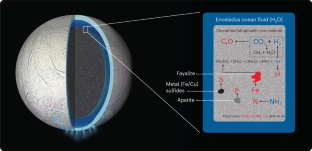2023-12-28 バッファロー大学(UB)
◆これにより、星や惑星の内部、磁場生成、進化などに関する大きな疑問に対する洞察が得られ、高圧下での他の物質の振る舞いを予測する手法が示唆された。研究は高圧下での物質変化を探る新たな理論の進展を示している。
<関連情報>
- https://www.buffalo.edu/news/releases/2023/12/sodium-high-pressure-transformation.html
- https://onlinelibrary.wiley.com/doi/10.1002/anie.202310802
Na-hP4のエレクトライド性について On the Electride Nature of Na-hP4
Stefano Racioppi, Christian V. Storm, Malcolm I. McMahon, Eva Zurek
Angewandte Chemie International Edition Published: 05 October 2023
DOI:https://doi.org/10.1002/anie.202310802
Graphical Abstract
The Na-hP4 phase, a high pressure electride, contains clusters of eleven sodium atoms within which charge is localized. Quantum chemical calculations show that this build-up of interstitial charge stems from the overlap of pd hybrid orbitals on the sodium atoms comprising this cluster, resulting in the formation of a multicentered bond, increased density, and semiconducting behavior.
Abstract
Early quantum mechanical models suggested that pressure drives solids towards free-electron metal behavior where the ions are locked into simple close-packed structures. The prediction and subsequent discovery of high-pressure electrides (HPEs), compounds assuming open structures where the valence electrons are localized in interstitial voids, required a paradigm shift. Our quantum chemical calculations on the iconic insulating Na-hP4 HPE show that increasing density causes a 3s→3pd electronic transition due to Pauli repulsion between the 1s2s and 3s states, and orthogonality of the 3pd states to the core. The large lobes of the resulting Na-pd hybrid orbitals point towards the center of an 11-membered penta-capped trigonal prism and overlap constructively, forming multicentered bonds, which are responsible for the emergence of the interstitial charge localization in Na-hP4. These multicentered bonds facilitate the increased density of this phase, which is key for its stabilization under pressure.




